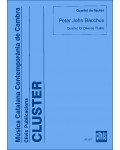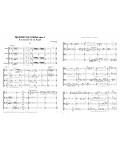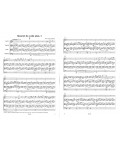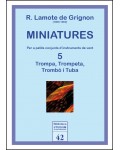
No products
Prices are tax included
Product successfully added to your shopping cart
There are 0 items in your cart. There is 1 item in your cart.
- English
- Castellano
- Català
Quartet for Diverse Flutes
DAC327
The lyric first movement starts the piece with three flutes and alto flute. The second movement, a perpetual motion scherzo, begins with four C-flutes. There is no break between the third and fourth movements, and takes places over an ostinato. The piece comes to a bravura and virtuosic finale.
| Period | 20th Century |
| Subheading / Parts | I.Andante - II.Molto allegro - III.Cadenzas - IV.Finale |
| Instruments | 4 flutes |
| Pages | 71 |
| Time | 14 min. |
| Contents | Score and parts |
| ISMN | 979-0-3502-0809-6 |
| Price of print edition | 32,14 |
| Edition | Digital |
Quartet for Diverse Flutes was written in 1985 for the flute quartet Flute Force, of which I was a founding member. I was a student of John Corigliano at the time, and the piece represents my opus 1.
Flute Force has since maintained the piece as a regular part of it's repertory in it's concerts and tours, and it has also been recorded on CRI (#581). I am happy that it is now published for other flute ensembles to enjoy.
The piece is in four movements with the last three played without pause, and it is scored for flute/piccolo, flute, flute/alto flute, and flute/bass flute. The lyric first movement starts the piece with three flutes and alto flute. This movement can be played by itself with out the other three movements. The second movement, a perpetual motion scherzo, begins with four C-flutes gradually switching to piccolo, alto flute and bass flute, giving the complete range with the four instruments. The final climactic chord of the second movement becomes the first chord of the third movement, which is a series of short cadenzas for each of the instruments, as solos and in pairs. There is no break either between the third and fourth movements, and this last movement takes places over an ostinato in the bass flute. Much of the material form the first three movements is recapitulated and the piece comes to a bravura and virtuosic finale.
Peter Bacchus













![Quartet 1994 [score]](https://www.clivis.cat/1702-home_default/quartet-1994.jpg)
![Quartet 1994 [parts]](https://www.clivis.cat/72-home_default/quartet-1994.jpg)




![Shoshanna [score]](https://www.clivis.cat/1512-home_default/shoshanna.jpg)
![Shoshanna [parts]](https://www.clivis.cat/1511-home_default/shoshanna.jpg)








